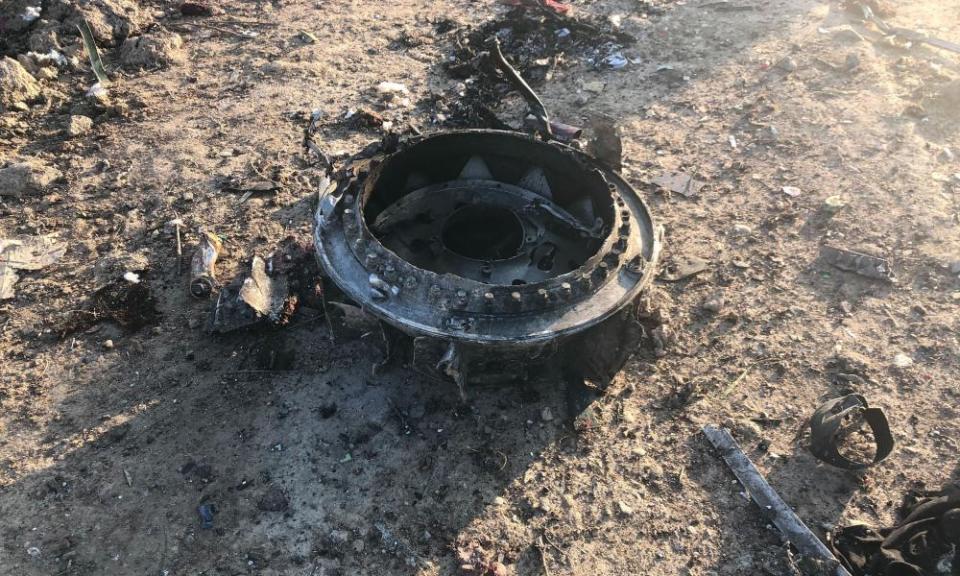Iran report on downed Ukrainian jet blames misaligned air defence system

A report from Iranian investigators on the shooting down in January of a Ukrainian jet has blamed a misaligned air defence system giving wrong information to its operators, who did not seek authorisation to fire before killing all 176 people onboard.
Iranian officials initially blamed the crash of Ukrainian Airlines flight 752 near Tehran on the morning of 8 January on technical problems with the aircraft, but days later admitted their own missiles had mistakenly downed it.
A report from Iran’s civil aviation organisation (CAO) released at the weekend said missile defence operators stationed near Tehran had failed to recalibrate their systems after moving a battery that morning while on high alert for American reprisals for Iranian missile attacks on US troops stationed in Iraq a few hours earlier.
Related: Black boxes of downed Ukrainian plane of ‘no help’, Iran claims
As a result of the “human error”, the radar system was 107 degrees off in detecting the trajectory of the Ukrainian jet, giving one of the missile operators the impression it was moving in a direction that made it more likely to be a hostile object, the report said.
The missile operator tried to inform a coordination centre that his system had identified a threat but failed because of “defective communication”. The operator then fired on the Boeing 737-800 without first seeking approval – a crucial “error prevention layer” that was ignored, according to the report.
“Under the applicable procedures, if the defence system operator cannot establish communication with the coordination centre and does not receive the fire command, they are not authorised to fire,” it said.
The Ukrainian aircraft had followed the correct procedures for taking off and was on its approved flight path when it was hit, investigators said.
The report aligned with earlier CAO investigations and statements from Iranian officials in putting the blame on the crew of the missile battery. A judiciary spokesman was quoted in June as saying six people allegedly involved in the incident had been arrested. Three of them had been released on bail at the time of his remarks and another three were in custody.
The shooting occurred five days after a US drone strike killed the Revolutionary Guards general Qassem Suleimani, an attack for which Tehran took revenge by firing a barrage of missiles at US personnel stationed at two bases in Iraq.
Iranian claims in the aftermath of the crash that the aircraft had developed a fault were thrown into doubt by images of missile debris around the site, followed by claims by western security officials that they believed the plane had been shot down.
Tehran confirmed its responsibility for the incident two days later, with President Hassan Rouhani describing it as an “unforgivable mistake”. A defence force statement read out on state television on the same day claimed the plane had turned towards a “sensitive military centre” of the Revolutionary Guards – a claim the latest report appears to dismiss.
Iran has resisted releasing the aircraft’s black box flight recorder to foreign investigators but does not have the equipment available to read its data. It plans to hand the device to French authorities on 20 July, according to a recent report from the state-run Islamic Republic News Agency.
Victims of the crash included dozens of Iranians and Canadians, as well as people from Ukraine, the UK, Afghanistan and Germany.

